Church Tour
Pictures and description of the many features in our church.
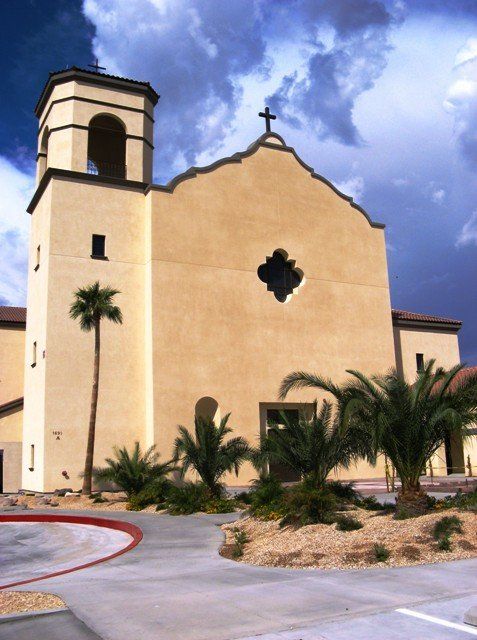
The Outside
The outside of the Church was designed by Duncan Stroik of the School of Architecture of the University of Notre Dame using the mission churches of Mexico as models, and a "city on a hill" as his motto. The great stones on the Western tip of the hill present a garden of meditation and an outdoor Stations of the Cross.
The Front Interior Doors
The inner doors were made in Guatemala.
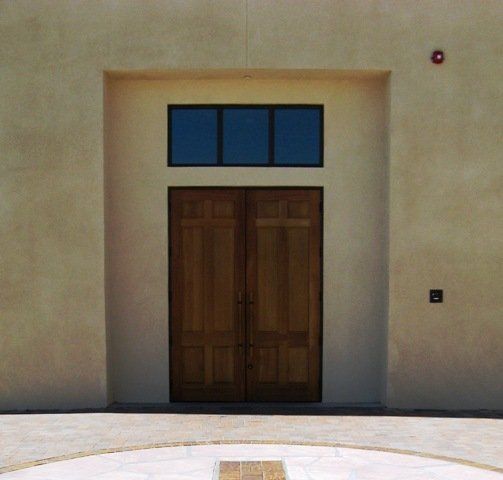
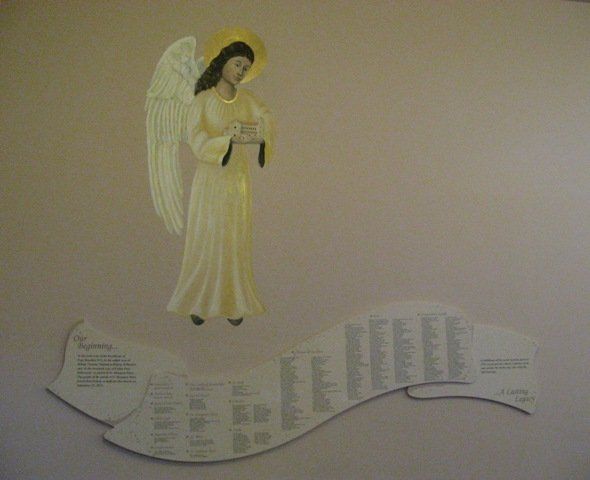
The Memorial Wall and Angel Guardian
On entering the Church, to the right you will find a list of donors under the gaze of the Angel Guardian of our Church which was painted by an artist from Northern Arizona University.
The Mission Lantern
Over the entry door to the Church is a lantern taken from renovation of the San Gabriel Mission in California. It had a red candle and lit the way to the Mission's records.
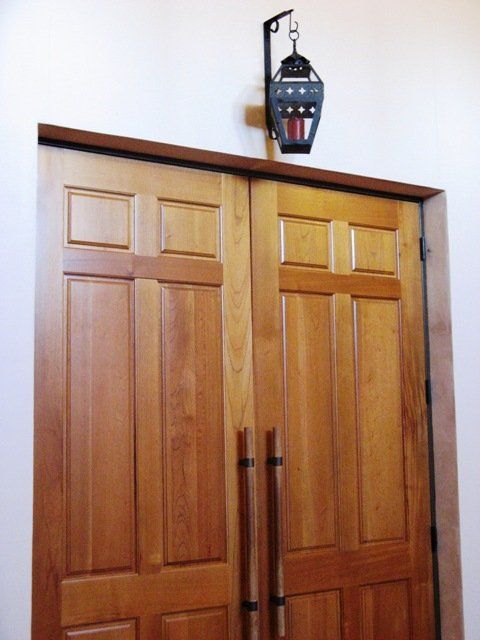
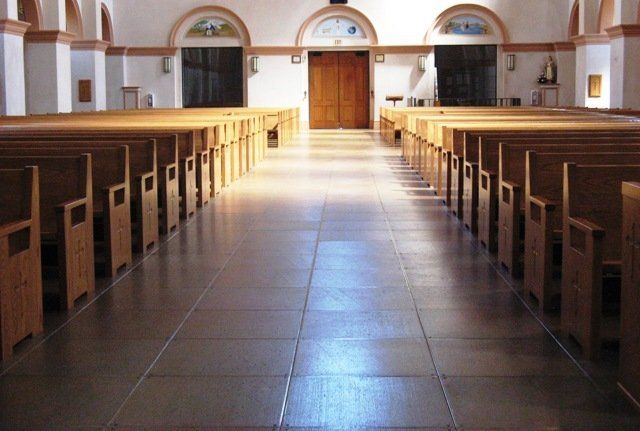
The Flat Floor
Like the great churches of Catholic tradition, the floor of this Church is flat. A flat floor tells people who enter that they will be participants, not spectators in a theater, and is easier for people with knee and hip problems to negotiate. The floor is raised to provide a plenum for the air-conditioning and heating systems.
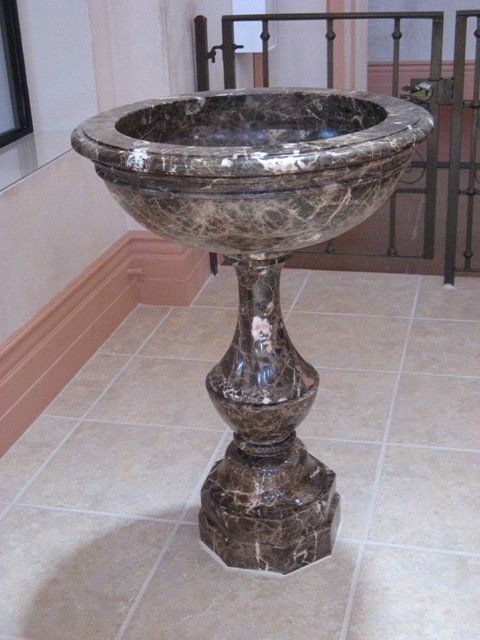
The Baptismal Font
Our Baptismal Font is made from marble from Mexico to match the marble at the altar and ambo. It drains into the ground so that baptismal water will be disposed of properly. With the Baptismal Font is our Easter Candle which is made by a parish family before the Easter Vigil and will be given to them to be divided up with their children when the children leave home.
The Central Axis
A direct line leads from the entry, through the altar to the tabernacle to keep the focus on what is truly important.

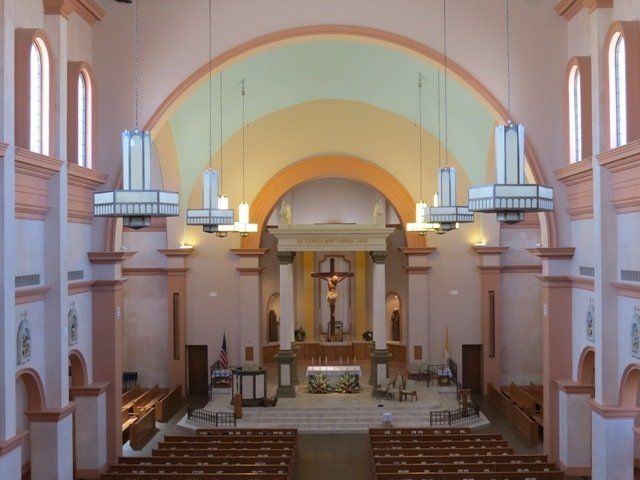
The Colors
The walls of the Church are the colors of the Mohave Desert. The trim on the walls is a copper color because Arizona is the Copper State. The floor of the nave is the color of the earth. The floor of the sanctuary is the color of clouds so that those standing in the sanctuary are standing on the clouds with the blue of heaven coming down on them.
The Confessional
The light plate to the right of the confessional door shows a red light when someone is making a confession, a green light when a penitent is able to enter for confession and no light when there is no priest present.
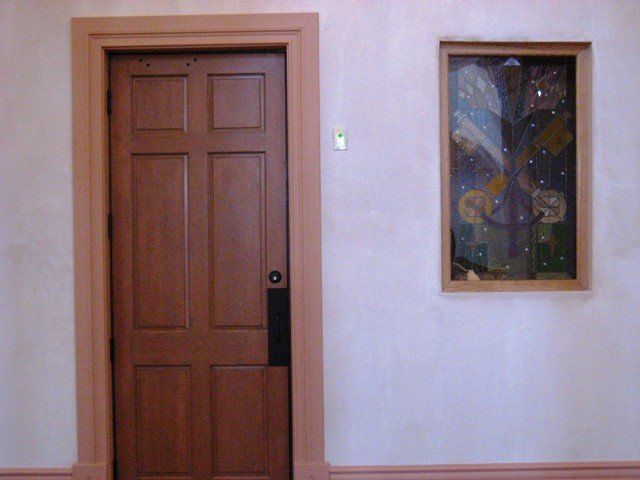
The Tabernacle
Behind the altar on the central axis is the Tabernacle. It is a 30 inches by 30 inches by 30 inches cube because the Holy of Holies in the Jerusalem Temple was a 30 feet by 30 feet by 30 feet cube. It is covered by a veil just as the Holy of Holies was as a sign of the real presence of God. It is surrounded by gold candlesticks and pillars because the Letter to the Hebrews makes it clear that the gold in the Jerusalem Temple was a sign of divinity (Hebrews 9:4). The inscription on the marble facade of the tabernacle reads "Sanctus, Sanctus, Sanctus" (Holy, Holy, Holy) or based on Hebrew usage, "Holiest" and is in Latin the language common to all Catholics. The ornate Sanctuary candle burning beside it is an antique over 100 years.
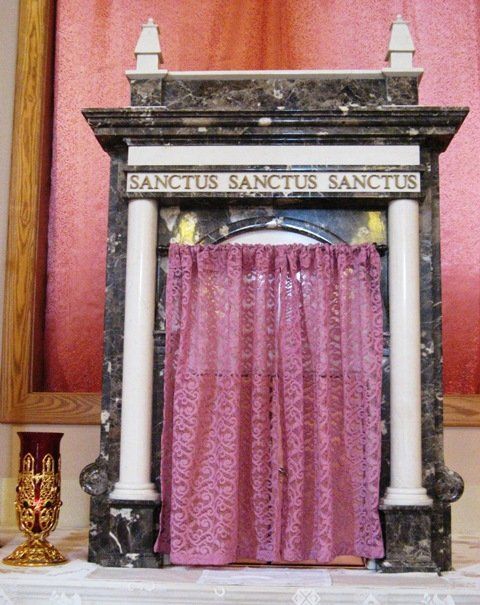
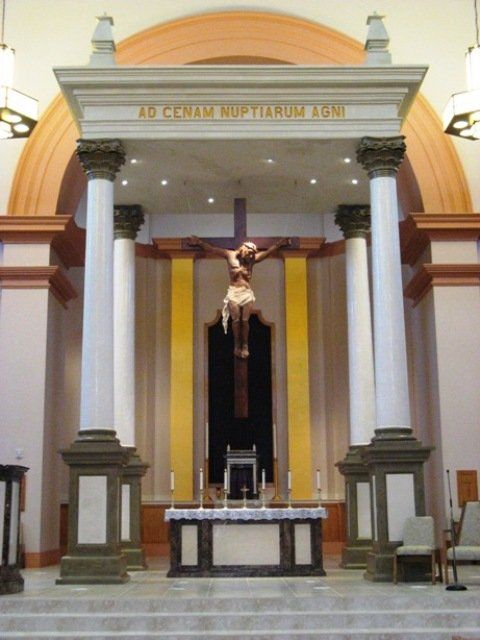
The Baldacchino
Sheltering and marking the importance of the altar is a 27 foot baldacchino. Its full inscription is "Beati qui(south side) ad cenan nupciarum agni (east side) vocati sunt (north side) Apol 19:9 (west side)" which translated means "Blessed are those who are called to the Wedding Supper of the Lamb" Revelation 19:9. It is in Latin which remains the official language of the Catholic Church as a way to proclaim that this Church belongs to all Catholics whatever language they might speak.
The Crucifix
Suspended from the Baldacchino is a 12 feet by 8 feet solid resin Crucifix. This Crucifix weighs almost 1200 pounds and was modeled after the image of Jesus on the Shroud of Turin.
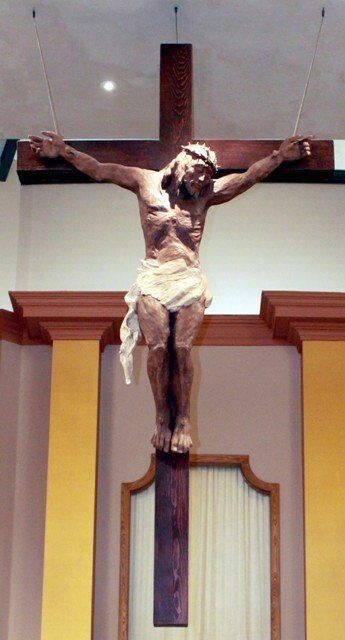
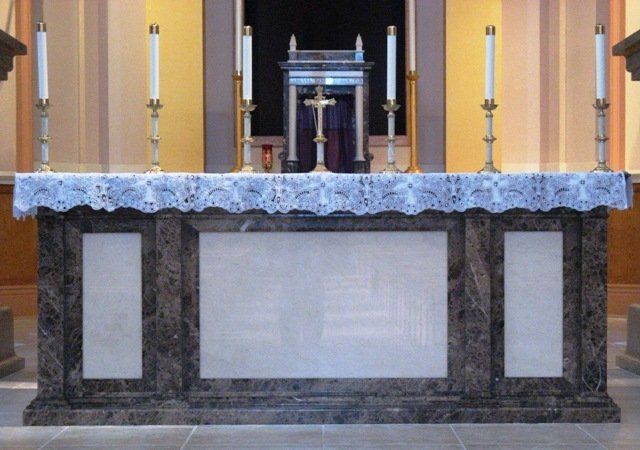
The Altar
Our altar is made from Mexican marble. The Eastern side contains the altar stone from the altar used in our old Church with relics of Roman Martyrs. We have a Latin Mass on the Second Sunday of the month and Liturgical law requires that the Latin Mass be offered over relics of martyrs. The altar is set "Benedictine style" after the preference of Pope Benedict that the priest as well as the people should face a crucifix.
The Ambo
"Ambo" is from a Greek word that means "raised place". The ambo is the place from which the Word of God is proclaimed. Our ambo is made of the same marble as the altar and tabernacle. It is oversized in order to give emphasis to the importance of God's Word.
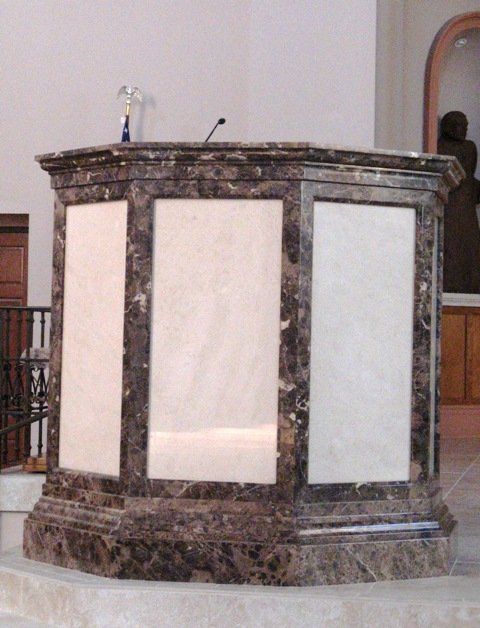
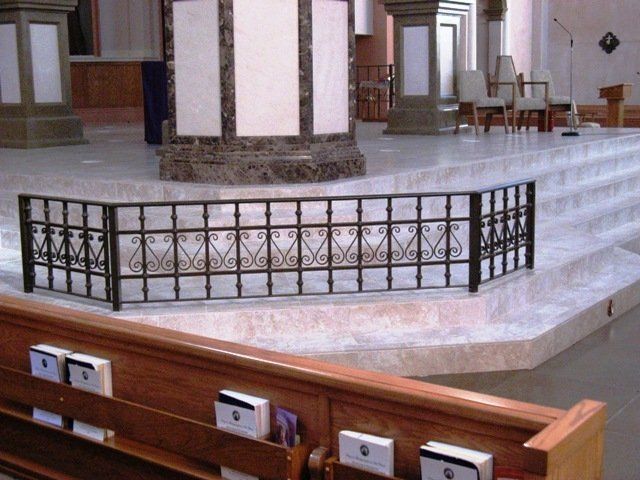
The Partial Altar Rail
On the northeast and southeast corners of the sanctuary is our partial altar rail. Architecturally, the altar rail functions to mark off the sanctuary as a holy place that should not be entered without serious reason like the part called "The Holy" in the Old Testament's Temple. Our altar rail also serves to make our Church friendly to the Latin Mass at which communion is received kneeling at the altar rail. The design of the wrought iron is the same as the railing around the baptismal font and around the outside bell tower.
The Pews
Made from ash by an American company that has its factory in Mexico, our 90 pews seat up to 1,022 people. The central nave has 52 pews, the transepts have 32 and the choir loft 6. There are 6 pews with seats that can be lifted up to accommodate wheel chairs.
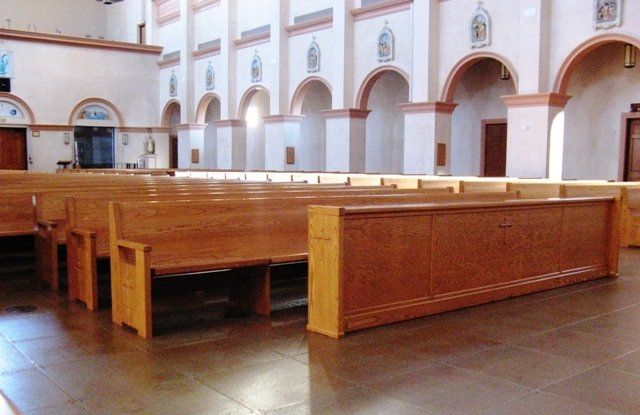
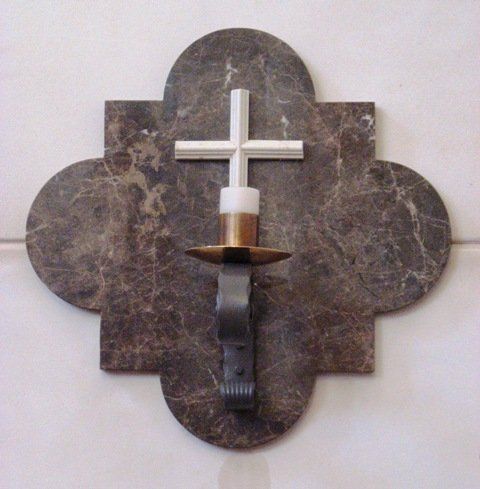
The 4 Consecration Candles
On the walls of the north and south transepts are 4 candles that signify this Church was consecrated by 2 Bishops to God. They were first lit during the Dedication Mass and thereafter will be lit only on September 29, the anniversary of the Dedication Mass.
The Chandeliers
There are 16 chandeliers in the Church and 16 wooden cabinet doors. Each door houses a mechanism by which each chandelier can be lowered for cleaning or changing its lights. The chandeliers each have three different lighting levels.
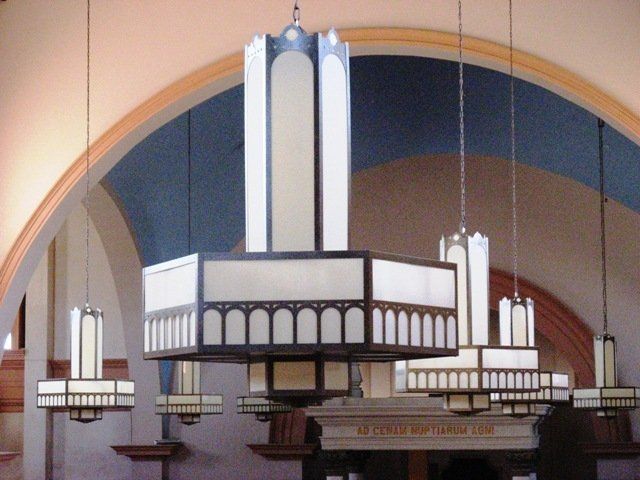
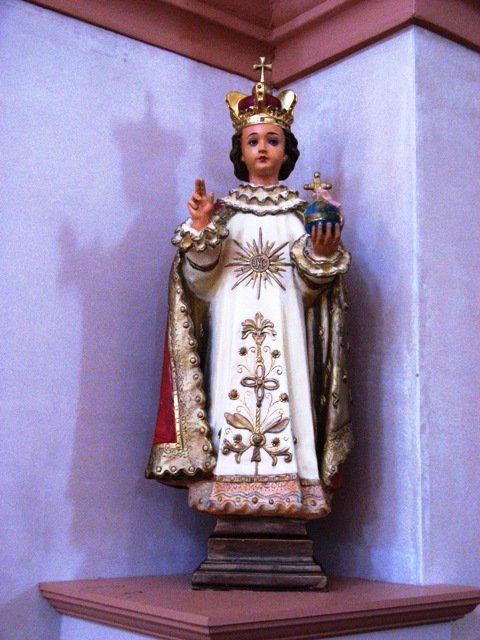
The Statues
To the immediate left on entering the Church is the Infant of Prague. This is a statue of Jesus as a boy-king, a devotion which comes from the Cathedral of Prague in the Czech Republic. The statue itself was made in the 1940's and restored by Norma Zimmer, a member of our Legion of Mary, who also restored the statue of St. Michael.
Turning left into the South transept is a 4 foot statue of St. Jude, Apostle of the Lord. He has a tongue of fire on his head from his Pentecost experience (Acts 2:3) and a club in his hands because he was clubbed to death. This statue was made in the Philippines.

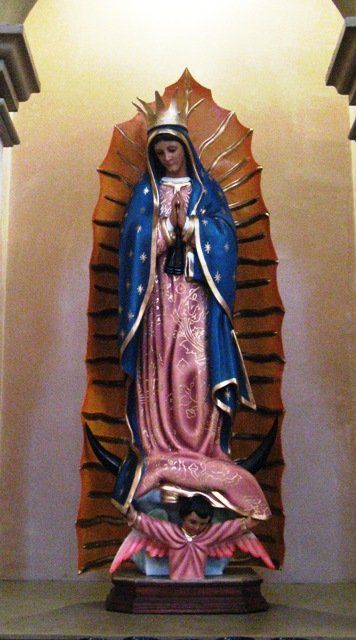
Across from St. Jude is a 6 foot statue of Mary the Mother of Jesus under her title "Our Lady of Guadalupe" who Pope John Paul II said is Mother of the Americas. This rendition is called "The ancient version" and comes from deep in Mexico.
The first statue in the sanctuary is St. Peter, the chief of the Apostles and our first Pope. A statue of St. Peter can always be identified by the keys he carries recalling Matthew 16:19 when Jesus established St. Peter in his office. St. Peter was chosen for the sanctuary to signify the parish's loyalty to the Pope.
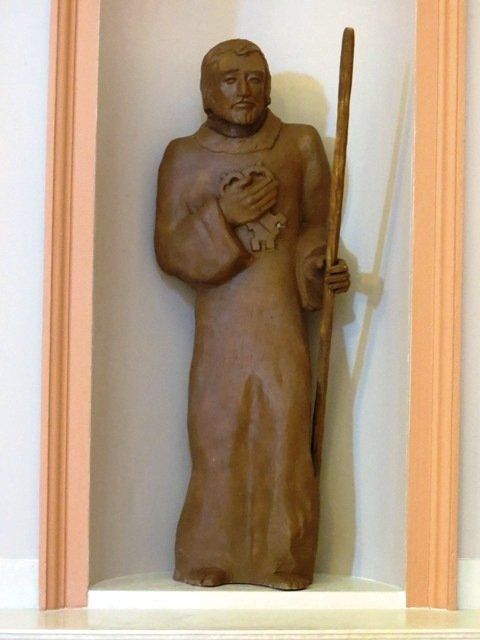
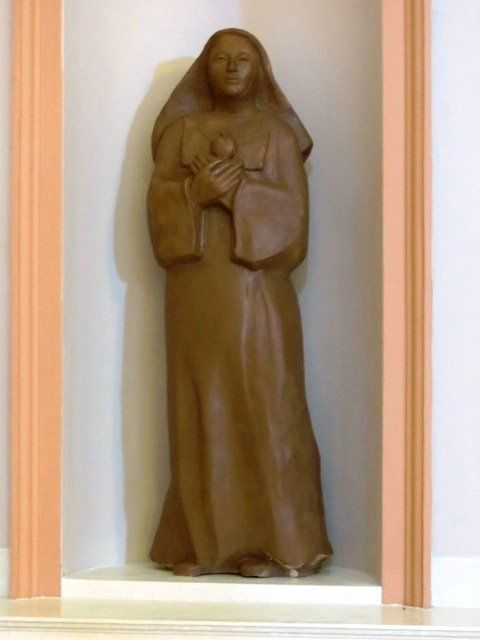
Across from St. Peter is a statue of St. Margaret Mary, the French nun who spread devotion to the Sacred Heart of Jesus and who is the patroness of the parish.
The Sacred Heart of Jesus is an acknowledgment that the parish continues the devotion of its patroness. This statue as well as the statues of St. Peter, St. Margaret Mary and the Crucifix are made of solid resin by Linda DaBeau of DaBeau Studios in Albuquerque, New Mexico.
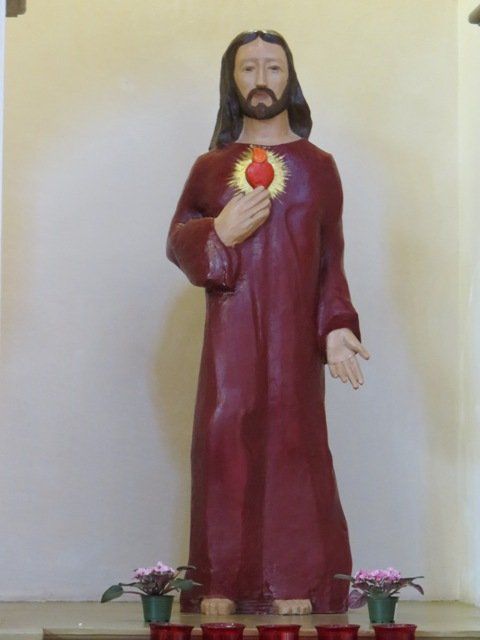
Across from the Sacred Heart is a statue of St. Lorenzo Ruiz the first martyr and Patron of the Philippines. This statue was made in the Philippines and was chosen to recognize the Filipino Community which is the second largest ethnic community in the parish.

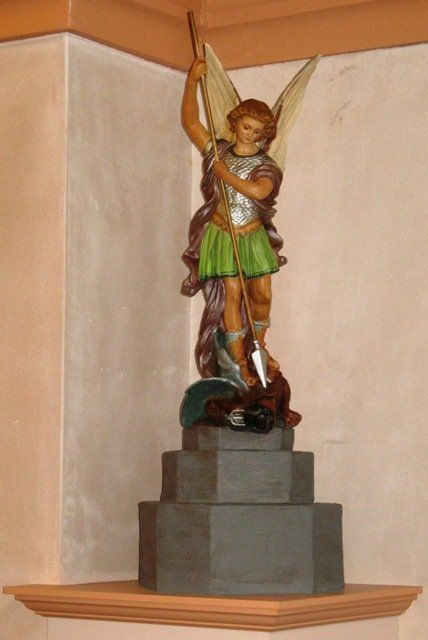
To the left of the entrance doors is an antique statue of St. Michael the Archangel. Beneath the devil is a representation of the tower of Babel built in Genesis chapter 11, 1-9 which scholars describe as a great ziggurat or stage (step) tower. The Church was dedicated on September 29, the feast of the Archangels.
The Windows
Mission churches belong to the baroque architectural period which came after the Gothic which used stained glass. Baroque architects wanted to play with light in their buildings and so used translucent glass. St. Peter's in Rome is a baroque building and has the same translucent glass used here. St. Peter's has one stained glass window and like St. Peter's, St. Margaret Mary also has one stained glass window at the confessional. The two circular windows in the north and south transepts are seven feet in diameter.
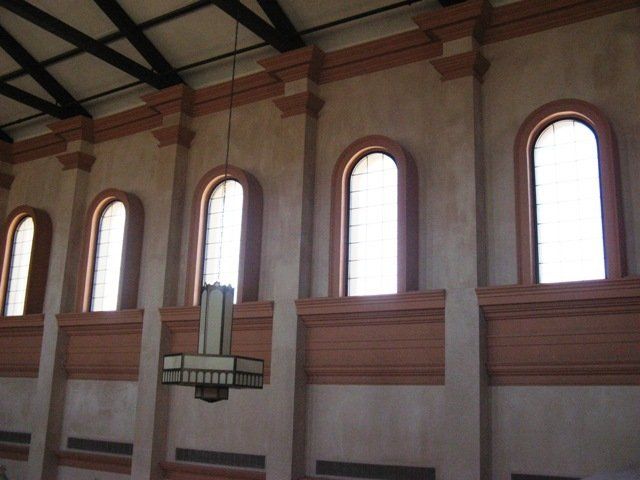
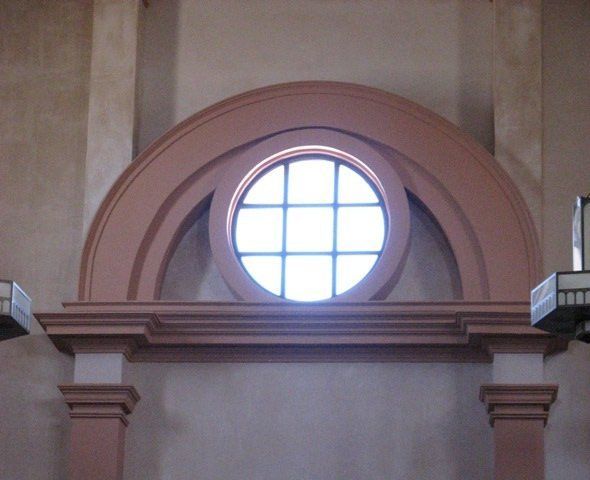
The Stations of the Cross
The fourteen 4 feet by 2 feet Stations of the Cross come from Sacred Heart Slovak Church in Canton, Ohio which is the reason their titles are in Slovak, the language in which they were prayed for over 80 years.

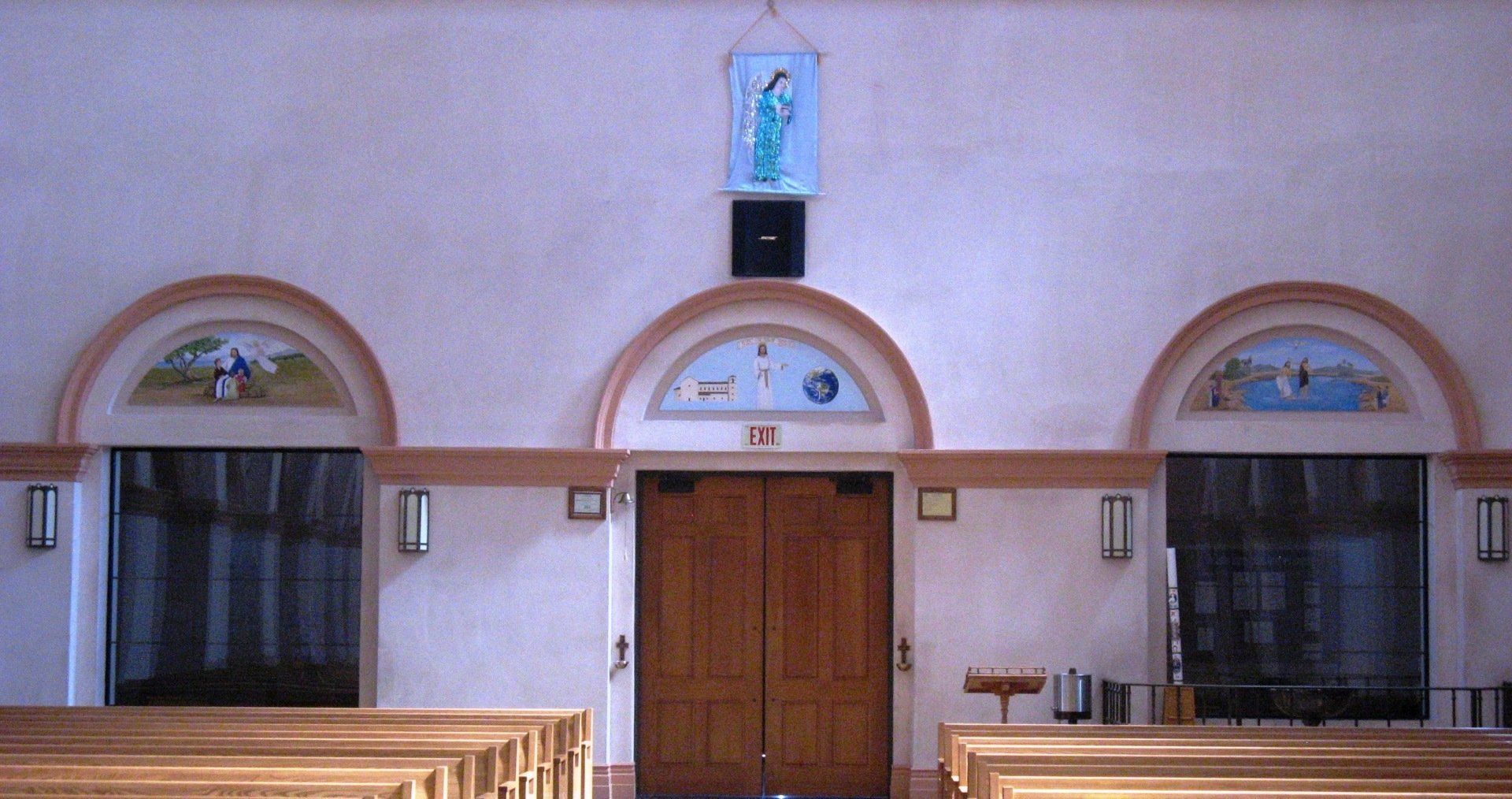
The 3 oil paintings
Over the exit doors are three paintings done by Mary Hill, a parishioner and local artist. To the left is Jesus with children to show the Narthex is the place to take children who need a quiet moment. To the right over the baptismal font is the baptism of Jesus by John which is traditional for a place of baptism. Over the central door, above the picture of the Church with Jesus pointing out to the world is the inscription "Ita misa est" which is the Latin dismissal from Mass. It is difficult to translate, literally the words mean "go, it is sent" or "go, the Mass is" but it means "take what you've experienced here out into the world".
The Vision
In 1992 at a parish town hall it was decided to build a church that "would look Catholic inside and out". It took 19 years and as you take this pictorial tour you can decide if we achieved the vision.
To view pictures of our Church and the grounds click here.




